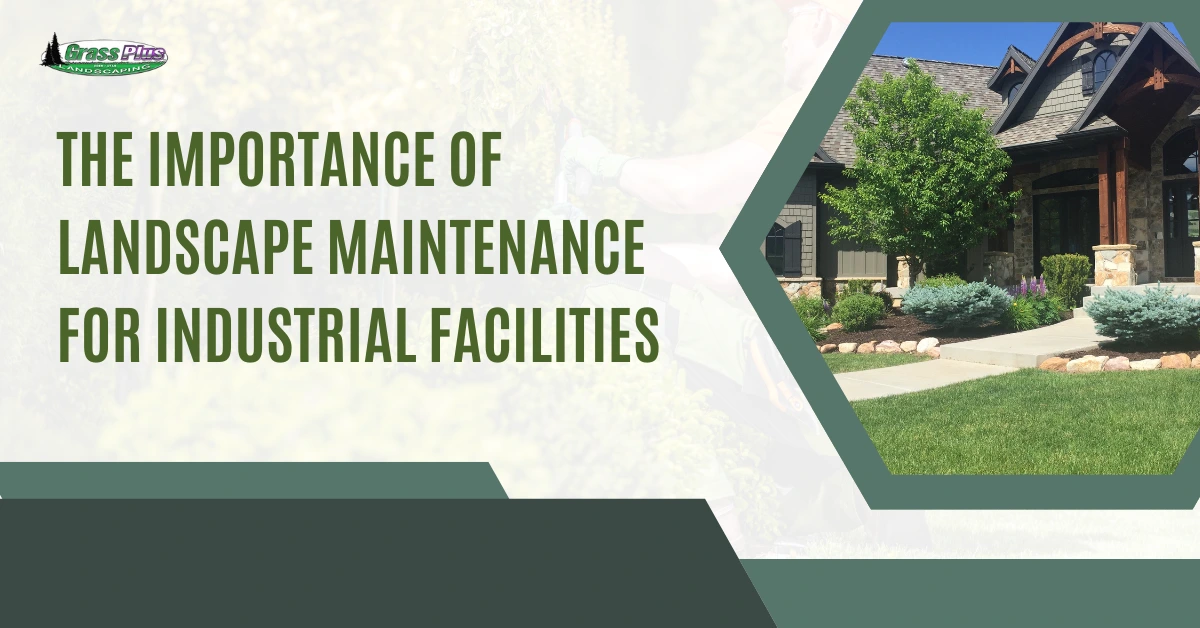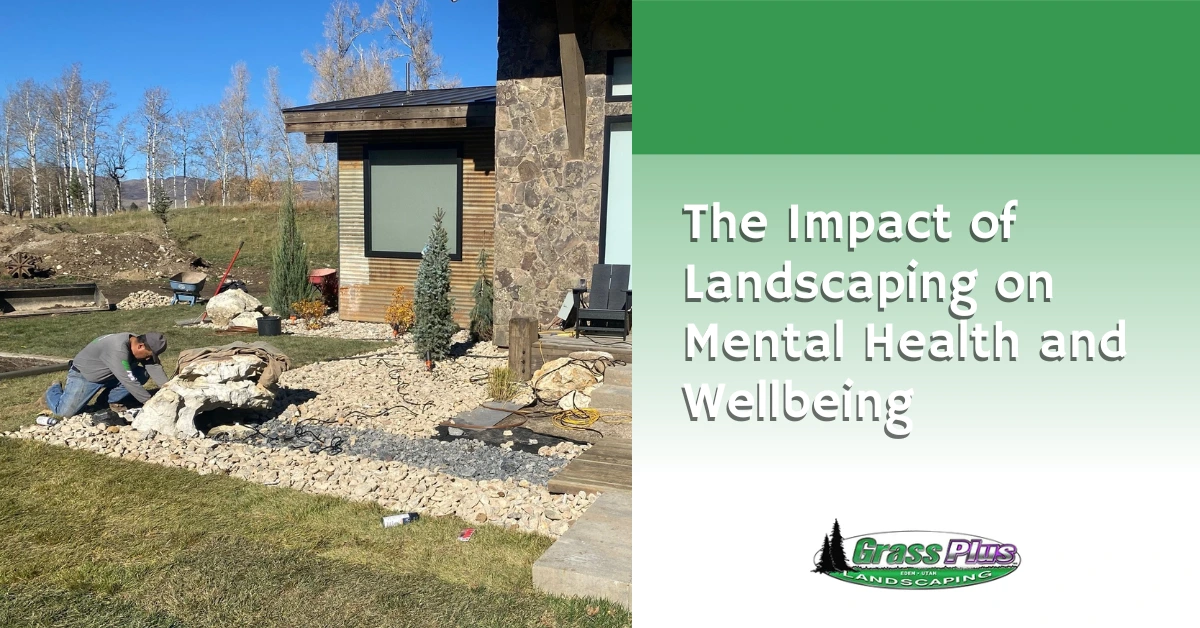When implementing this method, you’ll encounter several soil challenges. pH imbalance can restrict nutrient availability, causing poor plant health. Waterlogged soils increase pathogen risk by 30%, while nutrient deficiencies directly reduce crop yields. Soil compaction can diminish root growth and nutrient access, with bulk densities over 1.6 g/cm³ signaling trouble. High salinity, contamination, and texture issues like heavy clay also impede plant development. Organic matter depletion and erosion exacerbate fertility issues, with erosion possibly removing up to 50 tons of topsoil annually. As you proceed, each challenge will have nuanced impacts on your agricultural outcomes.

Key Takeaways
- Soil pH imbalance can cause nutrient lockout, impacting plant health.
- Poor soil drainage leads to root suffocation and increased fungal disease incidence.
- Inadequate nutrient levels directly reduce crop yields and growth.
- Organic matter depletion diminishes soil fertility and water retention.
- Soil compaction limits root growth and nutrient access, exacerbating erosion.
Soil Ph Imbalance
One of the primary challenges you’ll encounter with this method is managing soil pH imbalance, which can greatly affect nutrient availability and plant health. In hydroseeding, achieving and maintaining the ideal soil pH is vital. The best pH range for most plants lies between 6.0 and 7.5. Deviations outside this range can lead to nutrient lockout, where critical nutrients like nitrogen, phosphorus, and potassium become inaccessible to plants.
Addressing soil pH imbalance starts with accurate soil testing. You’ll need to employ pH meters or chemical test kits to determine the existing pH levels. According to recent studies, soils with a pH below 5.5 often require lime amendments to raise the pH. Conversely, soils with a pH above 7.5 might need sulfur or organic matter to lower it. Data-driven adjustments guarantee you apply the right amount of amendment, avoiding further imbalances.
Furthermore, continuous monitoring is fundamental. Soil challenges can be dynamic, influenced by factors such as rainfall, irrigation practices, and organic matter decomposition. Regular testing, ideally every six months, can help you make informed decisions, maintaining nutrient availability and robust plant growth in your hydroseeding projects.
Poor Soil Drainage
Inadequate soil drainage poses significant challenges in hydroseeding, leading to issues such as root suffocation, increased disease susceptibility, and poor seed germination rates. When soil drainage is poor, the hydroseeded area may retain excess water, creating anaerobic conditions detrimental to root development. This can result in root suffocation, where roots are deprived of vital oxygen, leading to stunted growth and eventual plant failure.
From an analytical standpoint, the disadvantages of hydroseeding become evident when comparing hydroseed vs sod in poorly drained soils. Research indicates that sod, being pre-grown and more established, is better equipped to handle suboptimal drainage conditions. In contrast, hydroseeding relies heavily on seed-to-soil contact and proper water infiltration, both compromised by poor drainage.
Additionally, poor soil drainage can exacerbate disease issues. Waterlogged conditions are conducive to pathogens such as Pythium and Phytophthora, which thrive in anaerobic environments and can decimate young seedlings. Data shows that hydroseeded areas with inadequate drainage have a 30% higher incidence of fungal diseases compared to well-drained counterparts.
Inadequate Nutrient Levels
You can’t overlook the impact of inadequate nutrient levels on soil health, as data shows a direct correlation with diminished crop yields. Crucial nutrient deficiency, soil pH imbalance, and organic matter depletion are critical factors that greatly impair soil productivity. Addressing these issues requires a thorough analysis of soil composition and targeted remediation strategies.
Essential Nutrient Deficiency
Frequently, significant nutrient deficiencies manifest in soil when critical elements like nitrogen, phosphorus, and potassium fall below ideal levels, thereby impeding plant growth and agricultural productivity. Maintaining optimal nutrient levels is crucial, especially when evaluating methods like hydroseeding versus sod. Both have unique challenges but understanding their disadvantages helps in making an informed decision.
When you encounter fundamental nutrient deficiencies, they typically present as:
- Stunted Growth: Plants exhibit reduced growth rates due to inadequate nitrogen, which is pivotal for leaf and stem development.
- Poor Root Development: Phosphorus deficiency affects root growth, leading to weakened plants and reduced uptake of water and nutrients.
- Yellowing Leaves: Potassium scarcity often results in chlorosis, where leaves turn yellow, adversely impacting photosynthesis.
- Lower Yields: Overall crop productivity diminishes, leading to economic losses, which is particularly detrimental for commercial agriculture.
In the context of hydroseeding, one of the disadvantages is its limited nutrient retention compared to sod, which often comes with a pre-established nutrient base. This makes hydroseeding more susceptible to fundamental nutrient deficiencies. By contrast, sod provides an immediate, nutrient-rich environment, but it’s generally more expensive and labor-intensive. Addressing these deficiencies through soil testing and targeted fertilization can mitigate adverse effects, enhancing plant health and yield.
Soil Ph Imbalance
Soil pH imbalance, often manifesting as either too acidic or too alkaline conditions, can drastically affect the availability and absorption of vital nutrients by plants. When the soil pH drops below 6.0, significant nutrients like nitrogen, phosphorus, and potassium become less available. Conversely, a pH above 7.5 can lead to deficiencies in iron, manganese, and boron. Plants in these conditions exhibit stunted growth, chlorosis, and poor yield.
In acidic soils, aluminum toxicity becomes a substantial issue. Data indicates that aluminum concentrations increase exponentially as pH drops below 5.5, inhibiting root growth and nutrient uptake. For example, a study revealed that crop yields could drop by 20-30% under such conditions.
On the alkaline side, calcium carbonate accumulation can lead to micronutrient lockout. Analytical results show that soils with pH levels exceeding 8.0 often have iron and zinc deficiencies, reducing chlorophyll synthesis and photosynthetic efficiency.
To mitigate these issues, regular soil testing and precise pH adjustments are vital. Applying lime can raise pH levels, while sulfur or ammonium-based fertilizers can lower them. By maintaining an ideal pH between 6.0 and 7.5, you can guarantee nutrient availability and robust plant health.
Organic Matter Depletion
While maintaining proper soil pH is crucial for nutrient availability, addressing organic matter depletion is equally vital to prevent inadequate nutrient levels. Organic matter, which includes decomposed plant and animal residues, provides necessary nutrients and improves soil structure. When organic matter depletes, nutrient levels plummet, impacting plant health and yield.
To combat this, you should focus on the following strategies:
- Regular Organic Amendments: Incorporate compost, manure, or cover crops to replenish organic matter. Data shows that soils with 3-5% organic matter have ideal nutrient cycling and microbial activity.
- Minimize Tillage: Excessive tillage disrupts soil structure and accelerates organic matter decomposition. Studies indicate no-till farming can increase organic matter by up to 0.5% annually.
- Crop Rotation and Diversity: Rotate different crops and use diverse plant species to improve soil organic matter and nutrient availability. Rotational systems have been shown to increase organic carbon in soil by 15-30%.
- Monitor and Test Soil: Regular soil tests help track organic matter levels and nutrient availability. Analytical data from soil testing can guide precise amendments, maintaining balanced nutrient levels.
Implementing these strategies will mitigate organic matter depletion and sustain adequate nutrient levels for ideal crop production.
Soil Compaction Issues
Compaction reduces porosity and permeability, leading to significant issues in root growth and water infiltration. When soil particles are pressed tightly together, the resulting reduction in pore space limits the roots’ ability to expand and access necessary nutrients. This phenomenon is quantified by bulk density measurements; values exceeding 1.6 g/cm³ often indicate detrimental compaction levels for most crops.
You’ll find that water infiltration rates also plummet in compacted soils. A study revealed that infiltration rates in compacted areas could be as low as 1 mm/hour, compared to 10-15 mm/hour in well-structured soils. This hampers the soil’s capacity to retain moisture, exacerbating drought stress and reducing crop yields. Additionally, the restricted movement of air and water can lead to anaerobic conditions, fostering the growth of root pathogens.
Furthermore, compaction often results in increased surface runoff, accelerating soil erosion. Data shows that compacted soils can lose up to 50% more topsoil compared to non-compacted soils. This erosion not only depletes the soil’s fertility but also leads to sedimentation in nearby water bodies, impacting water quality and aquatic ecosystems.
To mitigate these issues, you should consider practices like deep tillage, organic amendments, and controlled traffic farming to improve soil structure and reduce compaction.
High Soil Salinity
Elevated salinity levels in soil can severely limit plant growth and crop productivity, as high salt concentrations disrupt water uptake and nutrient availability. When soil salinity rises, plants struggle to absorb the water they need, leading to dehydration and nutrient deficiencies. Additionally, salinity negatively impacts soil structure, making it less supportive for root growth.
To manage high soil salinity effectively, consider the following strategies:
- Leaching: Apply excess water to flush salts through the soil profile. This technique is most effective in well-drained soils but requires significant water resources.
- Salt-tolerant Crops: Select and cultivate crops that have higher tolerance to saline conditions. This can mitigate the negative impacts on plant growth and yield.
- Soil Amendments: Incorporate materials like gypsum to improve soil structure and facilitate the leaching process. Gypsum can displace sodium ions, enhancing soil permeability.
- Irrigation Management: Utilize efficient irrigation methods such as drip irrigation to control the amount and timing of water application, thereby reducing salt accumulation.
Erosion Susceptibility
Erosion susceptibility in soil considerably jeopardizes agricultural productivity as it leads to the loss of nutrient-rich topsoil, which is crucial for plant growth. When examining the data, you’ll find that erosion can remove between 10 to 50 tons of soil per acre annually, depending on factors like rainfall intensity, soil type, and land management practices. This significant loss not only depletes vital nutrients such as nitrogen, phosphorus, and potassium but also reduces soil organic matter content, impacting soil structure and water-holding capacity.
You need to evaluate the rate at which erosion occurs. For instance, sheet erosion, which is the uniform removal of soil in thin layers, often goes unnoticed until substantial damage has occurred. Rill and gully erosion, on the other hand, create visible channels and can remove vast quantities of soil in a short time. These forms of erosion can result in the loss of up to 100 tons of soil per acre per year in extreme cases.
Mitigation strategies should be data-driven. Implementing contour farming, cover cropping, and maintaining vegetation buffers can reduce soil loss by up to 90%. Utilizing these methods, you can sustain soil integrity, thereby enhancing long-term agricultural productivity.
Contaminated Soil Concerns
Contaminated soil poses significant challenges to agricultural productivity, particularly when it contains heavy metals, pesticides, or industrial pollutants that can disrupt plant growth and enter the food chain. Soil contamination can lead to reduced crop yields, compromised food safety, and long-term environmental degradation. You’ll need to address these challenges methodically to guarantee sustainable agricultural practices.
- Heavy Metals: Elements like lead, cadmium, and arsenic can accumulate in soils from industrial activities and improper waste disposal. These metals can be toxic to plants and humans, presenting significant health risks when crops are consumed.
- Pesticides and Herbicides: Residues from agricultural chemicals can persist in soils, affecting not only the current crop cycle but also future plantings. These chemicals can leach into groundwater, posing risks to both ecosystems and human health.
- Industrial Pollutants: Factories and mining operations can release various pollutants into the soil. These contaminants can alter soil pH, affect microbial activity, and reduce soil fertility over time.
- Remediation Costs: Addressing soil contamination often involves expensive and time-consuming remediation processes. Techniques such as phytoremediation, soil washing, and chemical treatments can be effective but require careful planning and implementation.
Soil Texture Problems
While addressing soil contamination is crucial, you can’t overlook the significant impact soil texture problems have on agricultural productivity and plant health. Soil texture, defined by the relative proportions of sand, silt, and clay, directly influences water retention, drainage, and aeration. For instance, sandy soils, with particle sizes ranging from 0.05 to 2.0 mm, exhibit excellent drainage but poor water-holding capacity, making them prone to drought stress. Conversely, clayey soils, with particles less than 0.002 mm, retain water effectively but suffer from poor drainage and low aeration, which can hinder root growth and microbial activity.
The texture triangle—an analytical tool—helps you classify soil texture, providing a basis for understanding how texture impacts nutrient availability and root penetration. Data indicates that loamy soils, which are an ideal balance of sand, silt, and clay, offer the best conditions for most crops. However, achieving and maintaining this balance can be challenging due to erosion, compaction, and other anthropogenic factors.
Moreover, texture-related issues such as crusting and hardpan formation can severely limit seedling emergence and root expansion. Addressing these problems requires precise management techniques, including regular soil testing, amendments, and appropriate tillage practices.
Low Organic Matter
Understanding the significant role of organic matter in soil health, you’ll find that low organic matter content can drastically reduce soil fertility, water retention, and microbial activity, thereby undermining overall agricultural productivity. Organic matter acts as a reservoir of nutrients, improves soil structure, and bolsters water infiltration and retention. When organic matter is deficient, several negative impacts ensue:
- Nutrient Depletion: Organic matter is a significant source of fundamental nutrients like nitrogen, phosphorus, and potassium. With low organic matter, the soil’s nutrient-holding capacity diminishes, leading to nutrient deficiencies in plants.
- Poor Soil Structure: Organic matter binds soil particles into aggregates, which are essential for maintaining proper soil structure. A lack of organic matter results in compacted soil, decreased porosity, and reduced root penetration.
- Reduced Water Retention: Soils with low organic matter have diminished water-holding capacity. This leads to increased runoff, erosion, and a higher risk of drought stress for crops.
- Decreased Microbial Activity: Soil microorganisms thrive on organic matter. A deficiency in organic content reduces microbial biomass and activity, which in turn affects nutrient cycling and soil health.
Addressing these issues is critical for sustainable soil management and promoting long-term agricultural productivity.
Heavy Clay Soil Challenges
When managing heavy clay soil, you’ll encounter significant water drainage issues, with data indicating up to 50% slower infiltration rates compared to loamy soils. Compaction problems exacerbate these issues, reducing root penetration by up to 30%. In addition, nutrient availability concerns arise as clay particles can bind nutrients, making them less accessible to plants.
Water Drainage Issues
Heavy clay soil often leads to significant water drainage issues, causing root oxygen deprivation and stunted plant growth. When you’re dealing with heavy clay soil, its high density and fine particles result in poor water infiltration and slow drainage. This situation can create an anaerobic environment detrimental to plant health. Here are four key aspects to evaluate:
- Reduced Aeration: Heavy clay soils have smaller pore spaces, which limit air exchange. This reduces oxygen availability for roots, impacting respiration and overall growth.
- Ponding and Surface Runoff: Due to slow percolation rates, heavy clay soil often experiences water pooling on the surface. This can lead to erosion and nutrient loss through surface runoff.
- Increased Root Diseases: Waterlogged conditions foster the growth of pathogens such as Pythium and Phytophthora, which thrive in saturated soils and can cause root rot and other diseases.
- Delayed Sowing and Harvesting: The water retention characteristic of clay soil can delay field operations. Wet soil is challenging to work with, leading to postponed planting and harvesting, which can affect crop yields and quality.
Compaction Problems
Compaction in clay soil greatly reduces root penetration and water infiltration, exacerbating existing drainage problems and limiting plant growth. When you deal with heavy clay soils, the particles are tightly packed, leading to a high bulk density that hampers root development. Studies indicate that bulk densities above 1.6 g/cm³ severely restrict root growth. Consequently, water infiltration rates can drop to as low as 0.1 cm/hr, causing surface runoff and erosion.
Moreover, compaction leads to a decrease in macropores—large soil spaces essential for air and water movement. Data shows that compacted clay soils can have less than 10% macroporosity, compared to the ideal 20-30%. This reduction in pore space limits oxygen availability, creating anaerobic conditions detrimental to root respiration and soil microbial activity.
To quantify, soil compaction can increase mechanical resistance, with penetrometer readings often exceeding 3000 kPa, beyond which root penetration is virtually impossible. This level of resistance not only stresses plants but also promotes shallow root systems, making them less resilient to drought and nutrient deficiencies. Hence, addressing compaction is vital for improving soil health and plant productivity in clay-dominated landscapes.
Nutrient Availability Concerns
Clay soils often exhibit nutrient availability challenges due to their high cation exchange capacity (CEC), which can paradoxically limit the mobility and uptake of vital nutrients like phosphorus and potassium. Even though a high CEC means clay can hold more nutrients, the strong adsorption to clay particles makes these nutrients less accessible to plants. You’ll often face difficulties managing nutrient levels in heavy clay soils.
Here are four key nutrient availability concerns in heavy clay soils:
- Phosphorus Fixation: High CEC leads to phosphorus binding tightly to clay particles, making it unavailable for plant uptake. Studies show up to 80% of added phosphorus can become immobilized.
- Potassium Retention: While clay can hold onto potassium ions well, this can result in reduced potassium availability for plant roots, leading to deficiencies.
- Micronutrient Imbalance: Micronutrients like iron and manganese can become either excessively available or tightly bound, causing toxicity or deficiencies, respectively.
- pH Fluctuations: Clay soils are prone to pH changes, affecting nutrient solubility. For instance, iron becomes less available in alkaline conditions, while phosphorus availability decreases in acidic soils.
Understanding these challenges helps you tailor your soil management practices to improve nutrient availability in heavy clay soils.
Conclusion
Steering through soil challenges is like tuning a delicate instrument; precision is key. A farmer once likened it to balancing a scale where each factor—pH, drainage, nutrients—must align perfectly. For instance, a mere 10% increase in soil compaction can reduce crop yield by up to 50%. Addressing these issues with targeted strategies guarantees ideal growth. Remember, each soil type has its quirks, and understanding these nuances is essential for agricultural success.





